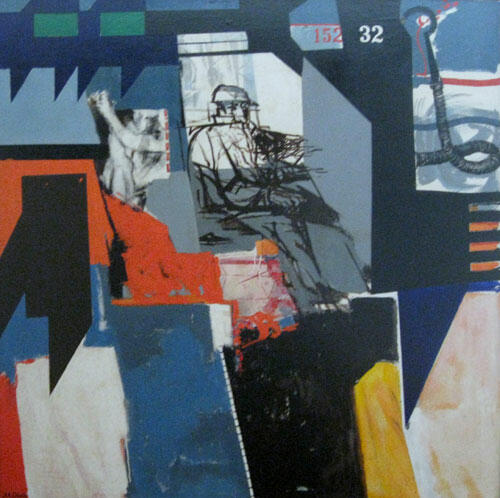José Antonio Dávila
PDVSA La Estancia, Caracas
In 1967, José Antonio Dávila (New York, 1935) visited several cities in the United States on an invitation from that country’s State Department. Back in Venezuela, he conceived a figurative approach to contemporary man conveyed through cabins and engine rooms where man is trapped in anguish and alienation. Later, in 1970, he would form a group called Presencia 70. It was created to promote individual work and its members were free to choose their approaches and proposals. It was composed of Oswaldo Vigas, Régulo Pérez, José Antonio Dávila, J.M. Cruxent, Humberto Jaimes Sánchez and Ángel Hurtado. Its duration was ephemeral, barely two years, but during that time they promoted two salons in the Museum of Fine Arts in Caracas, Caracas Athenaeum, and House of Culture of Maracay. Those artists already had a strong presence in Venezuelan visual arts.

Dávila’s work was inscribed within a “new figuration” that had its precedents in Pop art and abstract expressionism, but he also wished to exalt, in a new proposal, the presence of the working man within the social sphere.
The artist was one of the most outstanding members of the group. For this reason he was the winner, during that decade, of all the prizes awarded in local Salons, and he became the predominant figure in Venezuelan visual arts. During that period, his work was characterized by great chromatic planes, and he was distinguished by an extraordinary handling of polychromy, the utilization of composition and large colored surfaces. This is known as the period of “the cabins” or “modular constructions”. The loneliness of the urban man and the impersonality of the relationships through which he interacts in society stand out.
Dávila would produce the only three-dimensional experiences in his career through some monumental works which he would intervene upon, incorporating industrial parts. The large color planes would crush an individual hewn by a machine.This would be one of Dávila’s most important works, but also the least studied and analyzed, until now. This was the subject chosen by curator Élida Salazar, through an initiative that we celebrate, for we consider this is a stellar moment in the study of the artist’s work.
-
 Acrylic on canvas, 59 x 59 in. Acrílico sobre tela, 150 x 150 cm Private Collection./Colección privada.
Acrylic on canvas, 59 x 59 in. Acrílico sobre tela, 150 x 150 cm Private Collection./Colección privada.




